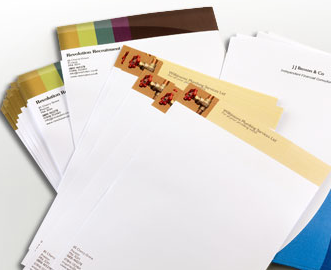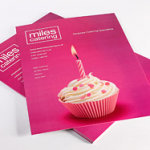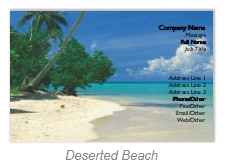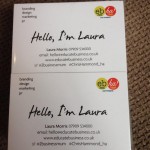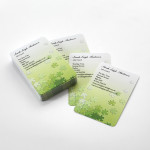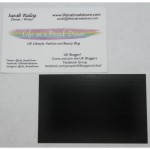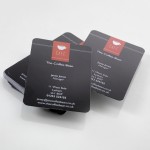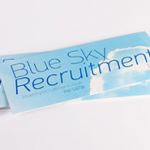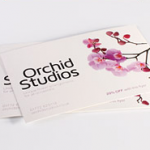Starting your own small business is an incredibly rewarding experience, but it can also be quite challenging. It’s definitely not an undertaking for the faint of heart. There are a lot of things to do in order to get your business up and running, and it can be difficult to know where to start – especially if you’ve never owned your own business before.
It’s almost impossible to know whether a startup will be successful or not until you get it launched. But even if you have a fantastic idea for a new product in an untapped market, your venture could fail before it’s even got off the ground if you get the basics wrong, such as marketing.
That’s why we’ve put together this small business startup checklist! In this guide, we will discuss the first 9 things you need to do in order to get your business up and running. Let’s get started.
1. Make a Business Plan: Is Your Business Viable?
This is by far the most important step in starting your own business: you need to figure out whether or not your business idea is actually viable.
This means doing a lot of market research and financial forecasting to determine whether there is a demand for your product/service, and whether you can make a profit from it.
You don’t need to have everything figured out before you start your business, but having a solid plan is essential for giving yourself the best chance of success.
If you’re not sure how to go about making a business plan, there are plenty of resources online (including our very own blog). Alternatively, you can always hire a professional business consultant to help you out.
2. Decide on Your Business Structure
Before you can start doing any business activities, you’ll need to determine what legal structure your business will have. This will determine things like how you file your taxes and how much liability you have. Limited company? Partnership? Sole trader? There are a lot of different options, so it’s important to do some research and figure out which one is best for your business. In brief:
• Sole trader is the simplest business structure – it’s just you, the owner, and there is no legal distinction between you and your business.
• A limited company is a legal entity in its own right, separate from its owners. This means that the company can enter into contracts and own property in its own name.
• A partnership is similar to a sole trader business, but with two or more owners.
If you want to run a startup, it’s probably best to start a limited company. That’s because you’ll presumably want it to grow quite big, and because startups are risky; running a limited company limits your liability if the business owes debt or goes under.
3. Choose a Name and Logo for Your Business
This one’s pretty self-explanatory: you’ll need to come up with a name for your business. It doesn’t have to be anything fancy or complicated. In fact, simpler and more concise names are often better, as they’re easier to remember (and spell).
The name you choose should represent what your business does. Members of the public should be able to figure out what you’re selling or offering from the name alone. You should also do some trademark research to make sure nobody else is using the same or a similar name (as well as being confusing for consumers, this could get you into legal trouble).
Besides the name, you’ll also need to design an eye-catching, relevant, scalable and memorable business logo. This is important for building up your brand identity. If you’re not a graphic designer, you can always hire someone to do it for you.
4. Invest in Personalised Business Stationery
With your business name and logo sorted, you’ll want to start printing out some personalised business stationery. This includes things like:
• Business cards
• Letterheads
• Compliment slips
• Address labels and/or stamps
• Note pads
• Appointment cards
• Promotional products, such as flyers, fridge magnets and mugs
These products make your business look professional and help people remember who you are and what you do. Part of running a successful startup is making a big first impression, and having professionally-printed stationery goes a long way towards achieving that aim.
You can have these products printed relatively cheaply and easily, thanks to companies like 123Print. We provide high-quality printing that is professional, affordable and totally customisable.
5. Register with Companies House
Now that your business is starting to take shape, you’ll need to register it with Companies House. This is a government agency that deals with company registrations and other business-related matters. It’s quick and easy to register with Companies House, and you can do it online.
6. Open a Business Bank Account
Once you’ve registered your business, the next step is to open a business bank account. This is absolutely essential for keeping your personal and business finances separate, which becomes even more vital as your business grows and you take on employees or co-directors.
You can either choose an old-fashioned bricks-and-mortar bank, or go with one of the many challenger banks/digital banks that have popped up over the last decade. Do a little research and decide which business account is best for you.
7. Register with HMRC
You’ll need to register with HMRC as soon as your business starts trading. This is necessary for declaring your income and paying taxes. If you don’t declare your income properly, you may be hit with fines or even be investigated for fraud – so ensure this step is done properly!
You can do this online too, and it shouldn’t take that long. Depending on how you’re going to run your business, you can register for other things like PAYE online too. Once you’re registered, you’ll be given a unique tax reference number (UTR) which you’ll need to do things like log in and communicate with HRMC.
8. Get Business Insurance
No business is complete without insurance. You’ll need to get insurance for both your premises and your employees. This is designed to help protect your company against day-to-day operational risks, such as mistakes, losses, premises damage and legal costs.
There are a lot of different types of business insurance, all of which may cover different areas and provide varying amounts of compensation. So, it’s important to do some research and find one that’s best suited to your needs. Make sure you shop around and compare prices as business insurance can be quite expensive.
9. Set Up a Website and Socials
In this day and age, every business needs an online presence. You’d be surprised how many potential customers simply won’t bother with a business if they don’t have a website or Facebook account.
Your website is your digital storefront, and it’s how people will find you online. If you’re not particularly tech-savvy, there are plenty of ways to build a website without needing to code it yourself. Online web development services are good if you’re on a budget, although if you’ve got big aspirations, you may want to hire a professional website designer instead.
It’s also vital that you put time and effort into social media content. This is how you’ll connect with potential customers and build up a following. Again, you can either do this yourself or hire a social media manager.
Get Started Today with 123Print
There are lots of other things you need to do when starting a business, but these 9 first steps will help get you off the ground.
When you’re ready to order high-quality, professionally printed business stationery, don’t forget to check out 123Print. We offer thousands of templates for business cards, flyers and more, all of which are fully customisable and affordable for new businesses.
Choose from a huge number of fonts and colour schemes to match your branding, and upload your own logo and artwork with the click of a button. With our speedy printing and dispatch times, your new stationery will be with you before you know it!
